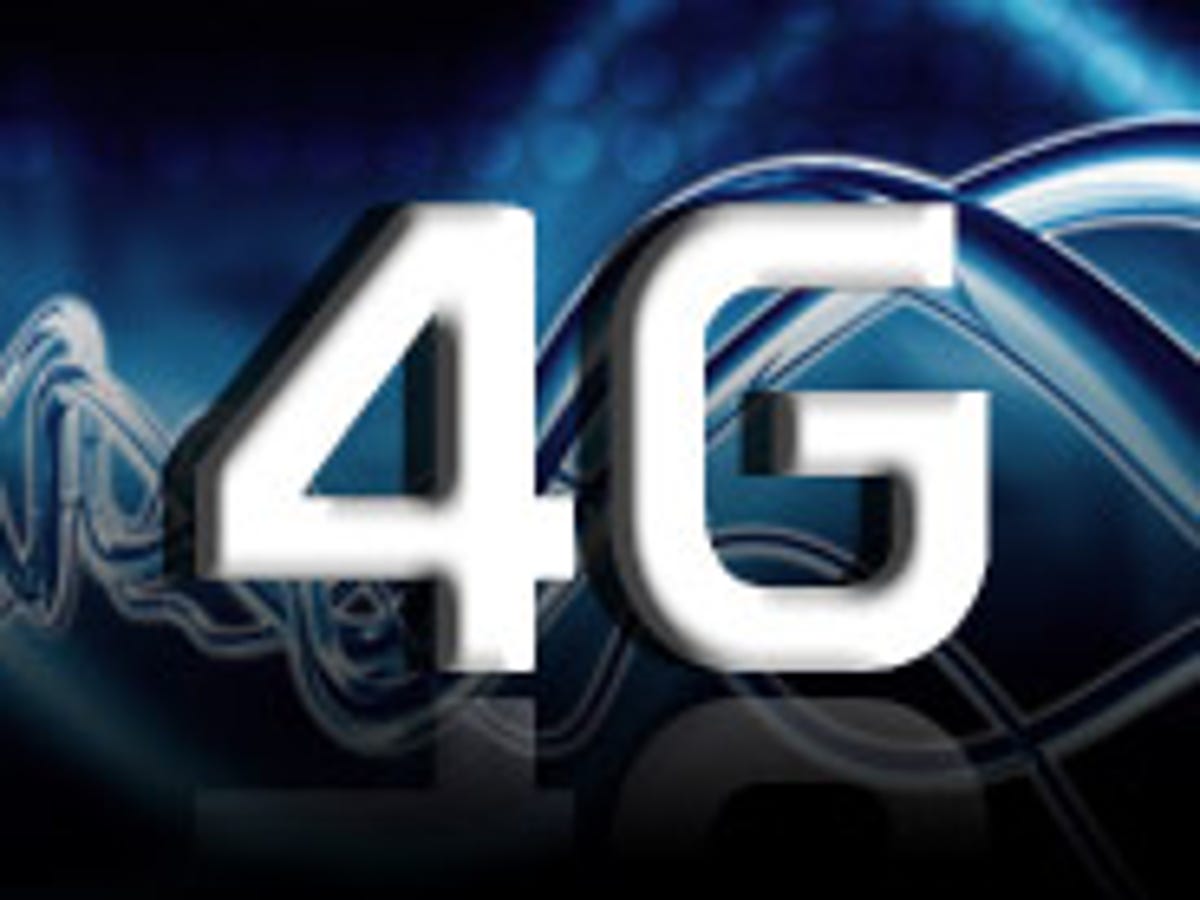Apple fans are supposedly disappointed that Apple didn’t change the design of the new iPad. I guess that’s why they bought more than 3 million of them the first weekend the device went on sale.

We heard the same complaints when Apple introduced the iPhone 4S. People wanted and expected some kind of cool design change to make the device look unique and different. But instead it looked like the one the company had introduced a year earlier. In this edition of Ask Maggie I try to explain why avid Apple consumers shouldn’t expect too many more design changes.
Separately, I also explain how wireless operators may be allowing 4G LTE subscribers to get a little more bang for their buck.
Why didn’t Apple redesign the iPad?
Dear Maggie,
It seems like a simple thing. But if Apple knows everyone wants a newly designed exterior on their new devices, why do they continue to spend all their time trying to fit new internals into the same old shell? The funny thing is that they do make changes, but they are so subtle you can’t tell until you put an old case onto a new device and it doesn’t fit right. It seems like it would be a simple task to change something small, but noticeable. In other words, it would be nice to be able to tell the new generation from the previous one. What’s the point in having the newest and greatest if no one can tell?
Thanks,
JHayes
Dear JHayes,
It seems like Apple’s general philosophy when it comes to the design of its products is that “If it ain’t broke, don’t fix it.”


And believe me, there doesn’t appear to be anything “broken” with either the iPad or the iPhone design. In fact, Apple’s success with these two products has made the company the envy of all its competitors. Apple sells so many of its products that it actually has more cash than it knows what to do with. That’s why on Monday it announced it will be offering a dividend to shareholders.
I understand that some Apple fans and bloggers may be frustrated that Apple hasn’t significantly changed the design of the iPhone or the iPad from preceding generations. But if you look at the sales figures for these products, it’s hard to argue that consumers are really that disappointed in the lack of changes in design.
The iPhone 4S, which on the outside looks exactly like the iPhone 4, is Apple’s hottest-selling iPhone ever. It’s broken all kinds of sales records. In the fourth quarter of 2011, iPhone sales increased 128 percent over the same period in 2010, according to data released by research firm IDC. The firm identified the iPhone 4S, which was introduced on October, as the primary reason the company leaped over LG and ZTE in the fourth quarter, to become the world’s third largest maker of cell phones.
Hands on Apple’s new iPad (photos)






Meanwhile, the third-generation iPad has only been on the market since Friday, and Apple says it has sold more than 3 million units. (By comparison, the iPhone 4S sold more than 4 million units its first weekend.)
I will concede that it can be annoying when the design of the product is tweaked just slightly enough that cases made for an older generation don’t fit a device from the next generation.
This happened to me between iPod generations. My first iPod had the headset slot in the top middle of the iPod. But the next generation of the device, Apple moved that hole to the side, which made it impossible for me to use the water-proof OtterBox I had bought for my first iPod.
Luckily the changes to either the iPhone 4S or the third-generation iPad haven’t been so big that these devices can’t be used with cases from the previous generation. Some cases might not fit perfectly, but most should be fine.
Related stories
- CNET Review: Apple’s new iPad
- Apple: 3 million iPads sold since launch
- Apple sells 4 million iPhone 4S units in first weekend
I can’t say for certain what’s behind Apple’s decisions when it redesigns a product. But if you look historically at the company’s products, Apple doesn’t introduce a new design simply for design’s sake.
Take the Apple iMac computer as an example. Its design changed a few times in the first several years the product was on the market, but since then the design has changed very little. In its first incarnation in 1998, the iMac came on the scene as an enormous all-in-one product that eliminated the need for a “tower.” It also came in several bright colors. That model morphed into the flat-screen iMac in 2002, putting the computing power in the base. Two years later in 2004, Apple combined the screen and the base. And since 2006, when the iMac design was refined slightly yet again, not much has changed in the design of the product.
Apple’s laptop product line has probably seen even fewer design changes, except for the most recent MacBook Air, which was the thinnest and lightest notebook on the market when it was introduced.
As the New York Times writer Sam Grobart said of Apple’s design strategy in October last year when the iPhone 4S was introduced: “Innovate, then refine. It’s a pattern at Apple, and the iPhone 4S — despite disappointment from some — fits right into it.”
Indeed the same can be said for the third-generation iPad. As you pointed out in your question, the design is very similar to that of the iPad 2. It’s basically the same shape and size of the iPad 2. What’s really different between the devices is on the inside.
So what’s the point in having the newest and greatest device if no one can tell it’s the latest device?
Maybe that’s the point. Apple is known for great design, but maybe what it’s really about is ease of use and innovation in functionality. The new iPad may not look any different than the iPad 2, but Apple knows that customers already like the design. And when you look at the super high-resolution display, you’ll see the difference between the two products. And when you surf the Net via 4G LTE instead of 3G on your new third-generation iPad, you will also see a difference in performance.
My guess is that these “internal” changes really are significant to the performance and experience delivered by the device. And that will likely matter more to people than changing the shape of the outer casing.
I hope this helped answer your question. Thanks for reading the column!
If 4G is so network-efficient, why can’t I get a break on the cost of my service plan?
Dear Maggie,
I read one of your recent articles where you said that wireless operators are moving to 4G because it’s a more efficient technology. So why aren’t they lowering their service fees? It seems like it’s kind of a scam, because the faster speeds will naturally make you want to download more stuff. And then you pay the carrier more, but that network is less expensive for them to run.
As an RF engineer, I know the networks are built for the benefit of the carriers, not the consumer. 4G is embraced because it allows carriers to serve more customers. But I just don’t buy into it. Why pay more for a faster speed if the total data to be downloaded is the same? And in the end it’s the carrier who benefits because he’s switched me over to a more efficient network. It doesn’t seem fair. I’m a tech geek, but not a sucker.
Thanks,
Ken
Dear Ken,
I hear you. When smartphone and tablet subscribers upgrade to a 4G LTE device they are actually doing wireless carriers a big favor. Wireless operators want everyone moving over to the newer-generation wireless technology because the LTE network is more efficient. This means that it costs the carrier less money to deliver the same amount of data to a customer on a 4G LTE network than it does over a 2G or 3G network.


Subscribers benefit from the network upgrade too. They get much faster speeds, which allows them to consume more data. It’s like turning off a congested two-lane secondary road onto a four- or five-lane freeway with only a handful of other cars. You can go as fast as you want on the network and no one else will get in your way.
But I see your point. Most customers signing up for 4G data services still pay the same amount every month to their carrier as those that use a 3G network. Sprint Nextel even made subscribers pay $10 a month more for 4G WiMax service.
Now wireless carriers are starting to recognize that they should be cutting consumers a break for using 4G. This may be why AT&T is giving its unlimited data subscribers with 4G LTE devices more leeway with their monthly downloads. The company recently changed its policy for unlimited data users. To curb heavy usage, it slows down users who consume more than 3GB of data per month. But people with faster 4G LTE service, it has increased that limit to 5GB. After that, 4G LTE users will also be slowed.
Similarly, Verizon Wireless is now offering a special promotion for customers with 4G LTE devices. Instead of getting only 2GB of data for $30 a month, it’s offering a deal in which subscribers with 4G LTE smartphones can get 4GB of data for $30 a month.
In Verizon’s case, the new special offer is designed to encourage people to switch to the more efficient 4G LTE network. Still, neither AT&T nor Verizon are dropping the price of their 4G LTE services, even though they will reap lower operational costs. But they are giving some subscribers more for the same price.
I hope this explanation was helpful.
Ask Maggie is an advice column that answers readers’ wireless and broadband questions. The column now appears twice a week on CNET offering readers a double dosage of Ask Maggie’s advice. If you have a question, I’d love to hear from you. Please send me an e-mail at maggie dot reardon at cbs dot com. And please put “Ask Maggie” in the subject header. You can also follow me on Facebook on my Ask Maggie page.



